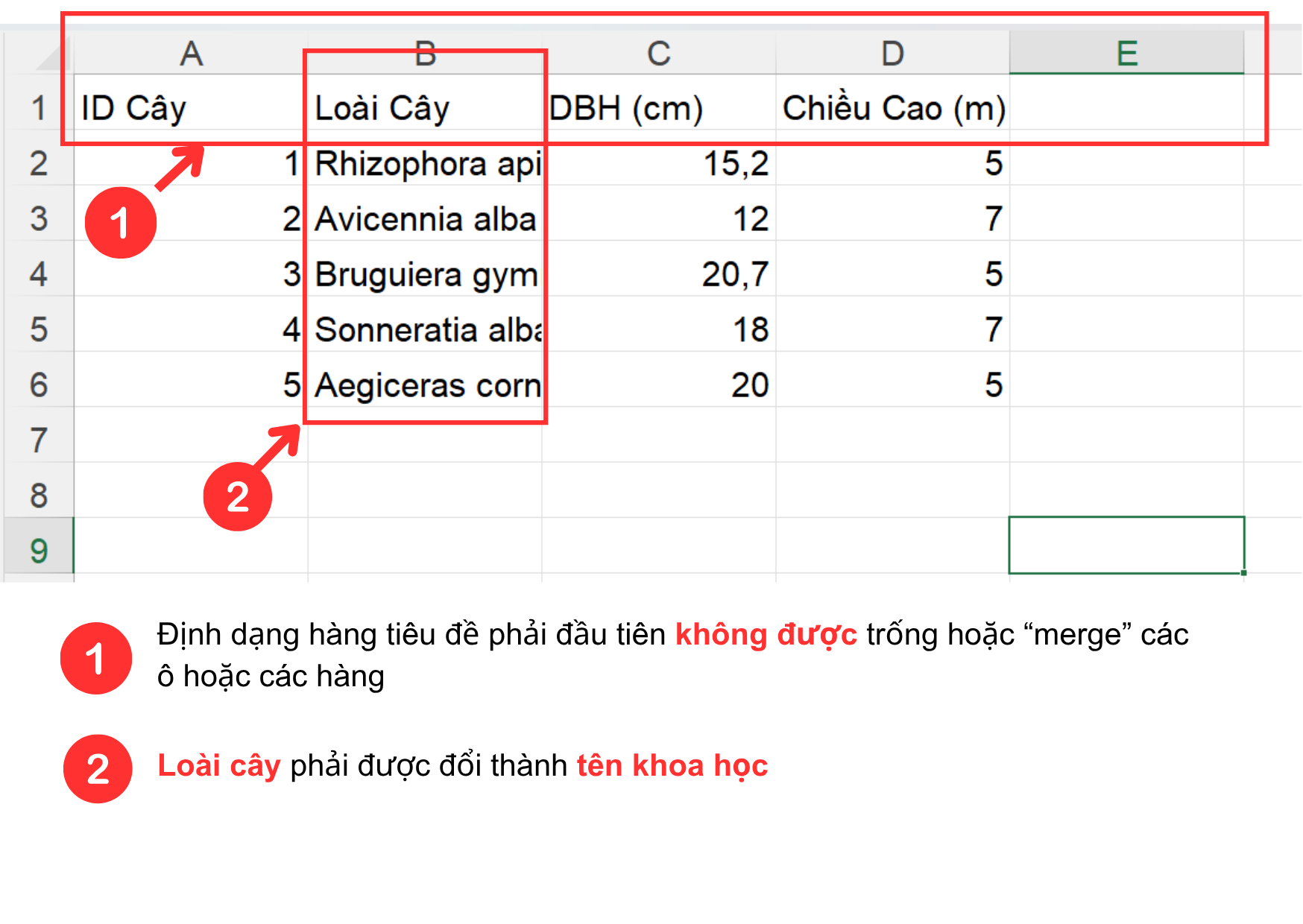User Guide for Mangrove Carbon Calculation Tool
To ensure the carbon calculation tool functions effectively, input data must comply with standard methods and formats.
1. Key Carbon Calculation Methods
Calculating carbon stock in mangrove forests typically relies on field measurements and sample analysis. The carbon components calculated include:
- Above-Ground Biomass Carbon (AGC): Includes tree trunks, branches, and leaves. This is often estimated based on allometric equations (the correlation between easily measurable dimensions and biomass).
- Below-Ground Biomass Carbon (BGC): Primarily consists of tree roots. This can be estimated through allometric equations or by soil sampling.
- Soil Organic Carbon (SOC): The amount of organic carbon stored in mangrove soil. This is the most crucial component and usually accounts for the majority of the total carbon stock. Soil samples need to be collected at specific depths.
- Dead Organic Matter Carbon (DOMC): Includes fallen trees, decaying branches, and litter.
Our tool uses scientifically validated equations and models to integrate the data you provide, thereby estimating the total carbon stock.
2. Input Data File Format
Please prepare the collected field data in CSV (Comma Separated Values) format. Below is an illustrative image of the structure and necessary data fields for the input file.

Example of the required input data table format for the tool.
3. Detailed Guide for Field Data Collection
To ensure the highest accuracy of calculation results, field data collection must adhere to the following principles:
Collect data from sample plots of standard sizes (e.g., 10x10m or 20x20m depending on tree density and size). Within each plot, record the following information for each tree or by species:
- ID: The sequential number of the measured tree.
- Species: The tree species name (e.g., Rhizophora apiculata, Avicennia marina).
- DBH (Diameter at Breast Height): Measure the trunk diameter at 1.3m height (unit: cm).
- Height (H): Measure the total height of the tree (unit: m).
- Wood Density: The wood density of the tree species (unit: g/cm³ or kg/m³), which can be looked up from scientific literature or measured.
- Mangrove_Type: The type of mangrove forest (e.g., Thuan_chung (monoculture), Hon_hop (mixed), Cay_con (saplings)).
Note: Ensure that DBH, Height (H), and Wood Density values are accurately measured/referenced. Allometric equations will use these values to estimate biomass.
Important Note:
- Ensure column names are exactly as shown above (case-sensitive, underscores).
- Use a comma (`,`) as the delimiter between columns.
- Ensure there are no extra blank lines or unwanted special characters in the file.
Expected Results & Impact
Investing in the effective utilization of mangrove forests not only brings economic benefits but also provides a solid foundation for biodiversity conservation, climate change adaptation, and sustainable development for coastal communities.
Higher carbon absorption than terrestrial forests
Potential revenue from carbon credits
Improved livelihoods & community capacity
Enhanced national environmental reputation
Limitations
We are facing significant barriers in fully harnessing the value of mangrove forests:
MEASUREMENT
The lack of accurate calculation methods means organizations and nations miss golden opportunities to participate in the global carbon market, losing out on potential revenue to reinvest in conservation and improve local livelihoods. This is an urgent barrier as the legal framework is gradually being finalized.
Difficulties in Effective Management & Conservation
- Lack of accurate carbon data
- Significantly reduces contributions and fulfillment of international commitments, affecting reputation.
Lack of Data for Research & Policy
Carbon stock data is a critical foundation for in-depth scientific research on climate change, ecology, and environmental economics. This shortage severely hinders the development of evidence-based policies for protection and sustainable development.
Loss of Ability to Raise Community Awareness
- Undefined carbon values make outreach less convincing.
- Reduces visible benefits, thereby decreasing active participation in conservation.


